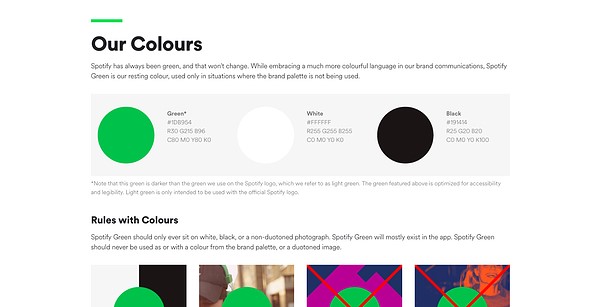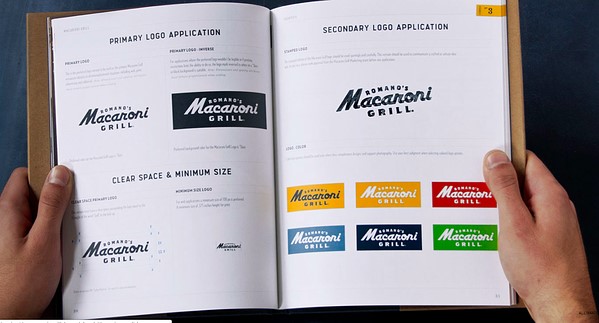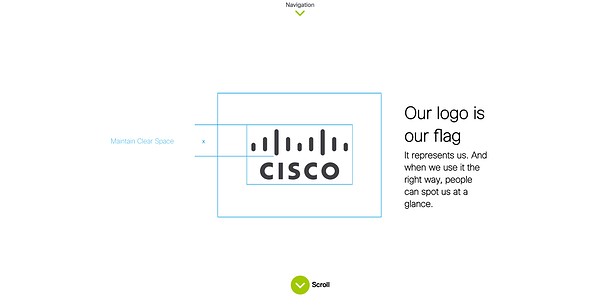A brand guide is a legal document that defines how an organization presents itself to the world through its logo, font and colors, images, and other elements.
In other words, it is a benchmark tool that helps maintain consistency in the look, feel, and tone of the brand. It is so powerful that some people call it the Bible, but fear not, these are different names for the same book.
Using branding makes your brand visible and felt even when different people are working across customer service, marketing, design, and marketing.
Why Is It Important to Have Brand Guidelines?
A brand guide should be used as a tool to maintain your brand identity. Whether your business is big or small, brand guidelines are important to help your brand work effectively.
Without these guidelines, your brand message can change at any time simply because of an inappropriate logo, fonts, and color scheme or someone who doesn’t know how to use words instead of graphics.
Here are some reasons why you may need a guide:
Brands change
For a brand to be effective, it must be consistent. If you change the color of your logo to better match certain products, it may no longer be recognizable to your customers or clients.
Credibility is the key to making your brand strong and recognizable. A style guide puts rules in place not to restrict creativity, but to make your brand identity consistent and recognizable. With branding guidelines, you can ensure your brand assets are used effectively and look professional every time they are used. And, when your brand is used correctly and consistently, you can create a powerful and recognizable brand.
Establishes rules
Your brand strategy will include more than just your logo’s color scheme and style. There will be rules and regulations that will be used to do these things.
Not only will the guide contain the likes of different logos, but it will also include examples of how not to use those logos. Rules like clear space around symbols are just as important as knowing when to use symbols and punctuation.
The guide will help anyone creating brand messages to know and understand what to use and how to use them. It’s a dynamic thing, but it’s also about knowing what’s right and what’s wrong when it comes to branding these people.
Provides tools
However, your brand guidelines aren’t just about setting rules. They aim to give you and everyone else who sends your brand messages the tools to keep your brand image moving forward.
Your brand guide will include the tools you want to use to build your brand. The elements included in your brand guidelines work together to create a cohesive message and these elements are essential tools to create compelling messages and brand marketing campaigns.
Avoid confusion
Just because a few people use the tools and materials listed in your brand guidelines doesn’t mean they always will. If you are looking to increase your business or just add an employee, more people will be involved in the aspect of your brand. You need something to make your brand cohesive.
A new user won’t know the rules of your brand identity, at least not right away. Having a set of standards in place will help avoid confusion for users of brand assets and maintain your brand’s consistency.
Essential Elements to Create a Brand Style Guide
Have you gone shopping, read a magazine or just browsed the internet and instantly recognized a brand based on its color, symbol or letters?
Many of the best brands are memorable because they have a consistent logo across all of their products. One way for companies to achieve this consistency is to create a brand style guide.
Here are five important things to include when creating your own style guide:
1. Logo
To make your logo stand out, it must be used regularly. A good brand manual explains exactly how to use their logo. This can include how much space you have to keep around the icon.
These ‘exclusion zones’ are clearly marked and guarantee space around the logo while maintaining a strong visual impact.
2. Colors
A color palette is a set of colors that are used when designing your name. To maintain your brand identity, your colors must be clear and consistent. Often, a brand’s color palette is divided into three categories: primary colors, secondary or accent colors, and neutrals.
3. Font
Text is another important part of a brand’s style guide. Typically, this section will include specific fonts, how to use them in your brand, and where to get them.
4. Images
In your brand style guide, you’ll want to provide guidelines for the types of images you’ll use. For example, does your business use more photos or illustrations? If photographs are used, are the subjects looking at the camera or each other? Are these pictures bright or more subtle?
5. Voice
Voice, as you may have guessed, is a part of the brand’s style guide that has nothing to do with the visual aspect. This section of the guide refers to the way we speak, the language you use, and all of your brand characteristics.
Focus On Important Points to Create Brand Guidelines
So how do you make a guide that works for everyone? Just follow this step-by-step guide.
Step 1: Choose your method
Static (published): If you’re a classic, you can create published instructions. We’ve seen many brands turn their instructions into works of art in this way.
Static (web): Digital directory is the easiest way to make your directory accessible from anywhere. You can create a PDF for your site or server. Interactive (web): Most brands opt for interactive style guides that are easier to navigate and more powerful.
Step 2: Create a table of contents
Your brand direction is the nexus of your brand strategy. They work well as your scriptures; therefore, they should include everything anyone can know about your brand. To guide your creation, list the things you plan to include.
Step 3: Create your style guide
Now that you have your plan, you can start creating your guidelines. Focus on clarity and effectiveness when writing your copy and adding structure. To make your style guide easy to use, you can also include tips, comments, sidebars, and more.
Example: How do you use your brand voice for social media, newsletters, marketing emails, or product descriptions? What’s your writing style like? What is the correct part of the symbol? Showing how these things look in real life makes it easier for them to imitate. Apps and tools: Do you use apps to scan your hex codes? If it helps you, it will most likely help others.
Step 4: Check your style guide
The point of the style guide is to clear up questions about how to create branded content. Whether you have 5 content creators or 500 working for your brand, it’s a good idea to have someone review your content before you share it with everyone.
Step 5: Make your brand guide easy to find
One of the most common reasons people ignore brand guidelines is simply because they can’t find them.
Make sure your instructions are in an easy to find and share with everyone, especially new employees, or business partners.
4 Powerful Brand Style Guide Examples
A style guide ensures consistency across different media. The visual language they establish becomes a guideline for how the company’s logo and product language appear in public. A brand style guide also adjusts the tone of the brand copy and the emotional theme of its use of the image.
See how five companies have combined these factors (and more) to create a great teaching style guide.
1. Spotify

Spotify offers its users an amazing digital experience. Their guidance focuses on creating the best artwork and does a great job of defining the uses for its assets. Spotify’s seamless user experience is based on its unique design language and is the key to its market dominance.
Spotify’s brand style guide provides comprehensive examples of how not to use its logo. It defines color compatibility, label management, and size restrictions – all rules that help create consistency in Spotify’s user-facing content. Third-party developers rely on guidelines like this when they create things that represent the Spotify brand.
2. Macaroni Grill

Macaroni Grill has released a pretty cool brand-style guide. Their manual downloads fit their industry, where a real aura and strong emotional experience define success. The design details are high, and they convey their message well throughout.
The guide focuses on its photography goals and details. They put a lot of thought into the textures and outline the techniques used for the photo styles on their menus, ads, and websites.
3. Cisco

Cisco brand guidelines are as widespread as its product offerings. It goes beyond design guidelines – it’s a platform for its mission, culture, and corporate value.
Cisco has built powerful UX into its brand guidelines. The gravity system causes the guide to bend and light. Changes in the manual are powerful and the font specification is memorable thanks to the plug-in that allows you to test their type directly on the screen. A downloadable checklist is added to make the guidelines more accessible and adaptable for internal and external use.
In addition to its design features, the Cisco style guide includes a brief section on purpose and design. This section dives into their value proposition and creates a framework for the organizational decisions they define during leadership.
4. Alienware

Alienware computers are among the most popular for serious gamers. Their trademark style guide reinforces the high-tech public image that takes performance seriously.
Dos and Don’ts as defined in this manual are not subject to change. Everything from fonts and vector details to photos and layouts is explained clearly in Alienware’s manual, an incredible product from a polished hardware company.
Conclusion
Now you know why a good style guide is important, what it should look like, and what you should include. It’s time to create a team for your business. Include the marketing team, salespeople, and any other creatives who work on your marketing and products when creating the brand guide. When done, share it with the entire company and save it as a copy somewhere easy to find.





Tell us your thoughts in the comments